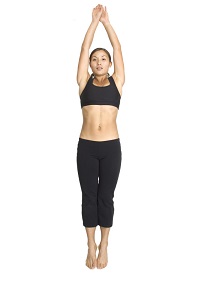
Plyometrics have numerous benefits including stronger muscles and tendons and a better nervous system. Muscles are strengthened by the quick and rapid exercises. It trains your muscles to convert strength into speed. In plyometrics you place stress on your tendons as you workout. Over time, your tendons would become elastic and stronger. Stronger tendons mean fewer injuries. The rapid movements involved in plyometric workouts are also training your nervous system to react faster. Quick muscle contractions need rapid signals to your brain in order for you to perform. As you continue to train, you’ll notice your movements will become quicker.
If you’re new into plyometrics, start with something simple. Try the workout below.
As with any exercise, you must start by warming up your muscles through some stretching and jogging around for a few minutes. Using a jump rope for a few minutes is a good way to warm up as well.
Mini Plyometric Workout:
- Begin by performing 10 Jump Squats. Stand with your feet shoulder-width apart. Squat deep, keeping your knees behind your toes, abs tight and chest out. Jump off the floor explosively and as high as possible, landing back in a squat position. Land softly by using your leg muscles and engaging your core throughout.
- After you have completed 10 squat jump repetitions, go right into your Plyometric Push-Ups. Get into a regular push-up position, lower your chest to the floor and explosively push off, forcing your hands to leave the floor. Land and lower your chest to the floor again, then push up again into your next rep. Keep your body straight with your abs tight throughout the exercise.
- Another great exercise is to do Lunges. This exercise helps build the muscle in your quads. You can use dumbbells or you can start without any weight. Start in a standing position and lunge forward with one leg until your knee is at a 90 degree angle and then push yourself back to a standing position. Repeat with the other leg. Make sure to keep your torso upright when performing the lunge.
- Try some Step Ups. For this exercise you can use a bench or a chair. Start by standing in front of the bench and then putting one foot flat on the bench and step up on the bench. Step back down to the floor and repeat with the other leg.
For more articles go to http://lifesportfitness.lifestyleezine.com
